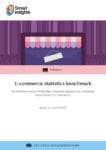Chart of the Week: More than three in five consumers say that retail innovations or solutions have made shopping experiences easier, with online shoppers seeing the biggest benefits
More customers now expect a seamless, personalized shopping experience. Whether they are buying in person or online, people want a quick and easy experience, something that is being made more possible with retail technologies.
In fact, more than three out of five consumers say that technologies used in retail and retail innovations have led to an improved shopping experience, according to the latest research from the National Retail Federation (NRF). When it comes to shopping online, 80% of customers say the same compared to 66% shopping in-store.
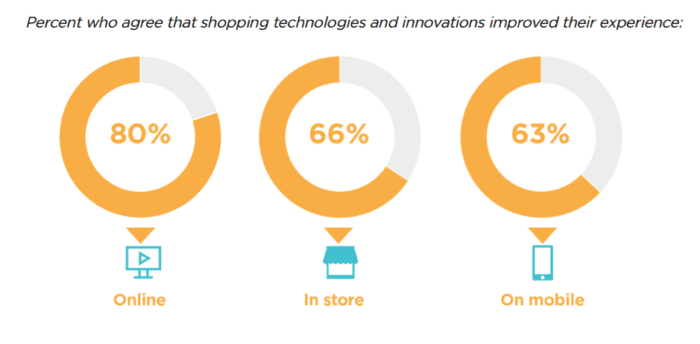
Despite the fact that there is an increased focus on mobile shopping experiences, only 63% said that shopping technologies and innovations improved their experience when shopping on mobile devices. This suggests that more retailers need to look at the experience they offer on mobile.
However, technologies, in general, are improving the consumer experience, but what do companies need to take into account?
Customers want tech solutions early in the buying process
According to the report, customers get most frustrated at the start of their shopping experience, with 37% of consumers saying they get frustrated when first researching features and reviews. This is perhaps why 47% are most interested in trying tech solutions at this stage, with innovations and solutions likely to reduce the frustration at this stage.
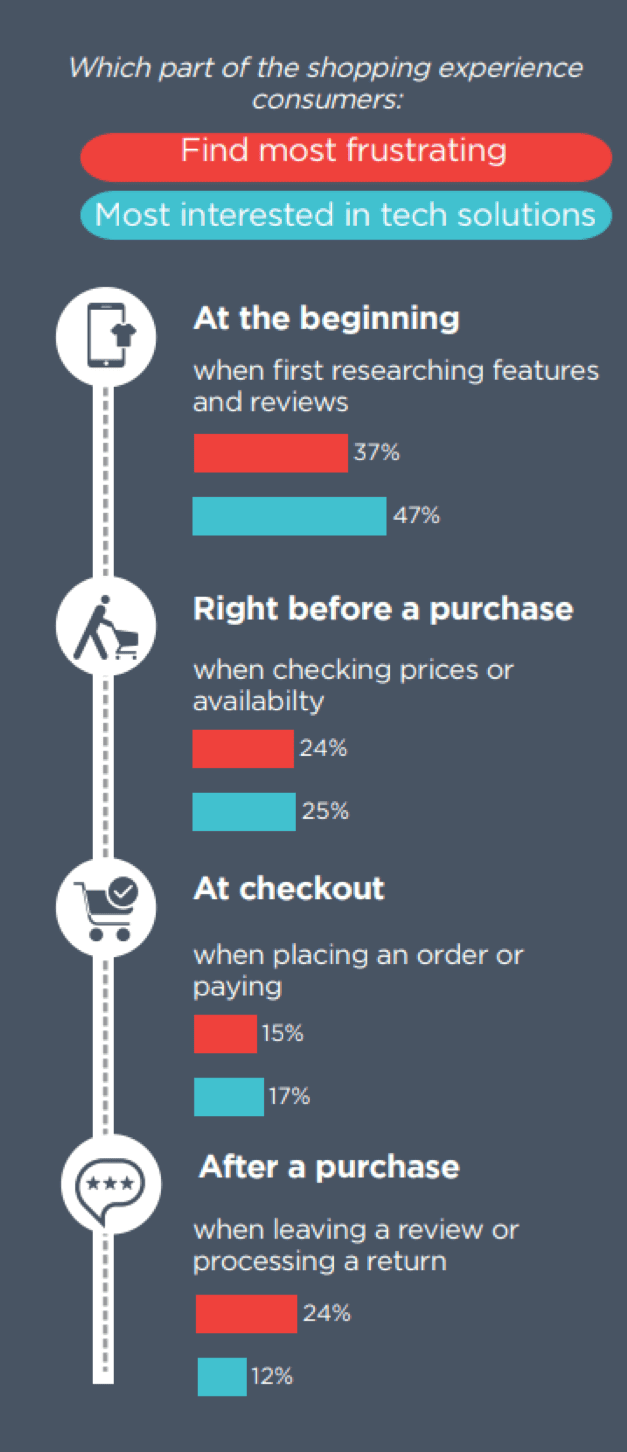
Consumers are also interested in tech solutions just before purchase, with 25% saying they would be welcome when checking prices or availability. Just as with at the beginning of the shopping process, frustration is also fairly high at this point, with 24% saying this stage of shopping is the most frustrating.
Interestingly, only 12% of respondents said they would be interested in tech solutions after a purchase when they are leaving a review or processing a return, despite this having a high level of frustration (24%). This suggests that processes rather than technology might be the roadblock at this point, with consumers needing simpler processes for returning products and providing feedback on their experience.
Online and in-store working together
In terms of customer satisfaction, the ability to buy online and pick up in-store is a welcome option.
Over half (56%) of consumers are aware that in-store pick-up for online purchases is an option for some retailers. Of these, 71% have tried it, with 67% of those who have tried it being satisfied with the option. This supports the idea that shoppers want their experience to be easy, with being able to pick up their order when it suits them avoiding the hassle of missed deliveries.
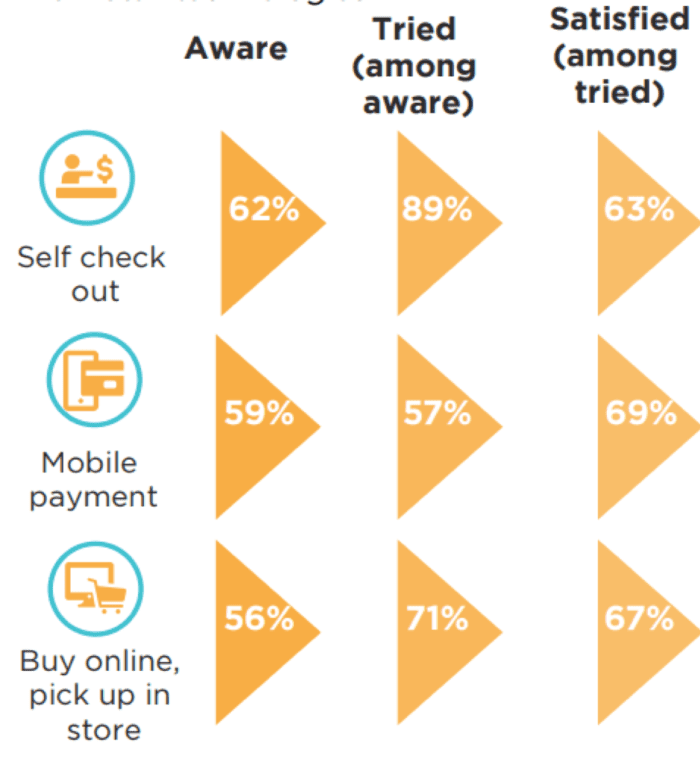
Another solution with a high satisfaction rate among those who have tried it is mobile payment. A greater proportion of consumers (59%) are aware that this is an option, although only 57% of those who are aware of it have tried it.
However, of those who have tried mobile payments, 69% were satisfied, likely due to the fact they are able to pay without needing to carry cash or a bank card.
Availability, price and location are important
Consumers are keen for companies to adopt technology that make life easier pre-purchase, helping to take the guesswork out of shopping. Options that make it easier to decide on a purchase are sought after by the majority of respondents.
Over half (55%) are very interested in tech solutions that allow them to see whether a product they’re interested in is in stock or available, with 52% saying it is important for retailers to offer this option.
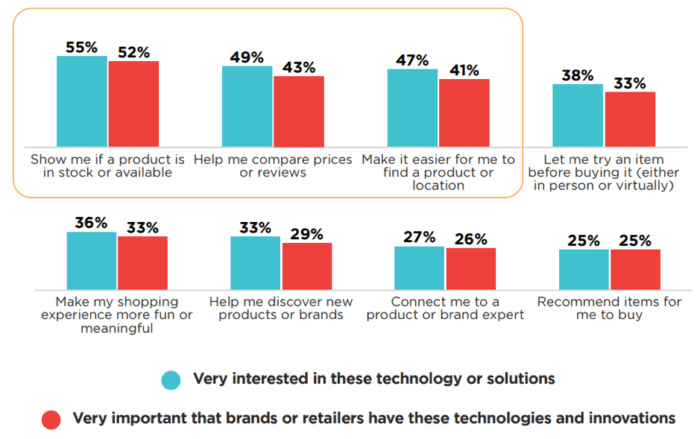
Just under half (49%) are also interested in technologies that better enable them to compare prices or reviews in order to narrow down their choices, while 47% want to be able to find a product or location easier.
In contrast, just a quarter (25%) or respondents are interested in technologies that recommend items for purchase, which may well be because this form of personalization has been available for quite a while now. It seems that people want more solutions that enable them to easily purchase a type of product they have already decided on, which e-retailers need to bear in mind.
Emerging retail solutions are targeting customer pain points
When it comes to the next set of retail and e-commerce trends, consumers are interested in those that provide solutions for their main pain points.
This includes visual search, which enables shoppers to search for products using photos they’ve taken or found online. In fact, 86% of those who have tried visual search are interested in trying it again, while 60% of those who haven’t tried it would like to.
Consumers are also interested in trying smart dressing rooms, which can allow them to see how different outfits will look on them without having to deal with the discomfort of using a real fitting room. In fact, of those who have used this technology, 88% would be interested in trying it again, with 57% of those who haven’t tried it being interested in doing so.
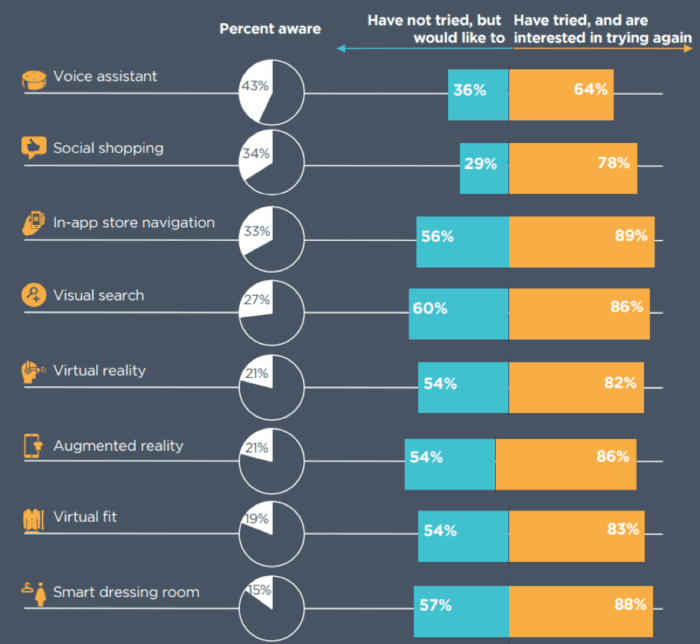
However, some solutions are popular among those who have tried them but not among those who are yet to try them. While 78% of those who have tried social shopping want to give it another go, only 29% who haven’t tried it but are aware of social shopping are interested in trying it.
Similarly, voice assistants are not overly popular among those who are aware of them but haven’t tried them, suggesting that certain solutions are only suitable for specific audiences. This is where detailed audience research will come in handy, as you can ensure you’re developing the right solution to suit the needs and wants of your existing and target customer base.
Final thoughts
Technology can help provide the personalized and easy shopping experience that customers want both in-store and online. While the majority of consumers have found tech solutions to be beneficial, brands still need to do some work to make mobile catch up with desktop and store experiences.
Making the beginning of the shopping process, which is where customers experience the highest levels of frustration, as smooth as possible is likely to increase your conversion rate and reduce cart abandonment. Making features and reviews easy to find, as well as compare, will enable customers to find the product they want while offering real-time stock levels and different delivery methods will help them get to the checkout.
However, as with any solution you look to implement, you need to ensure it is what your customers want. Research your personas, ask your consumers what they want and look to provide solutions for their real pain points rather than their perceived pain points in order to improve experiences both in-store and online.
